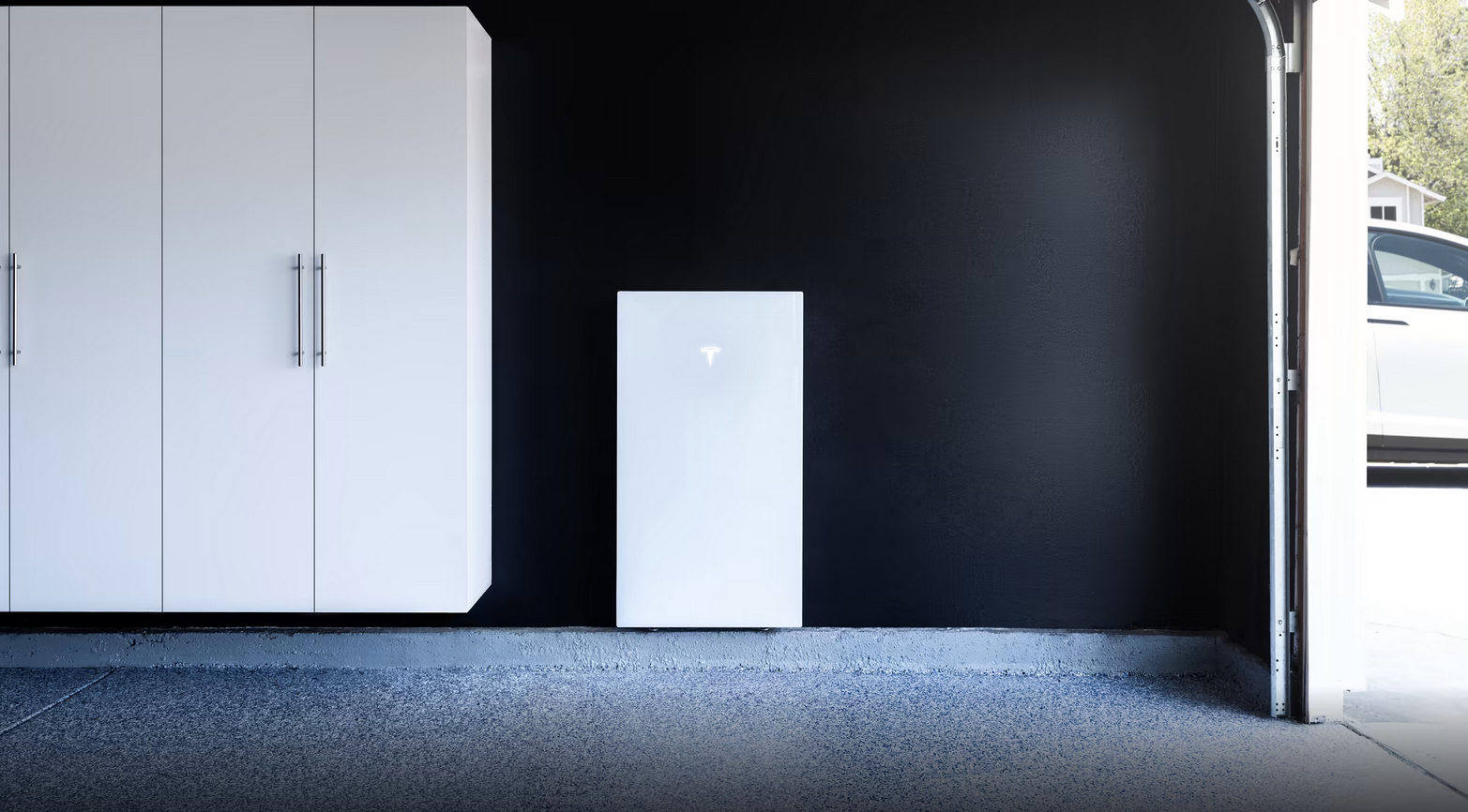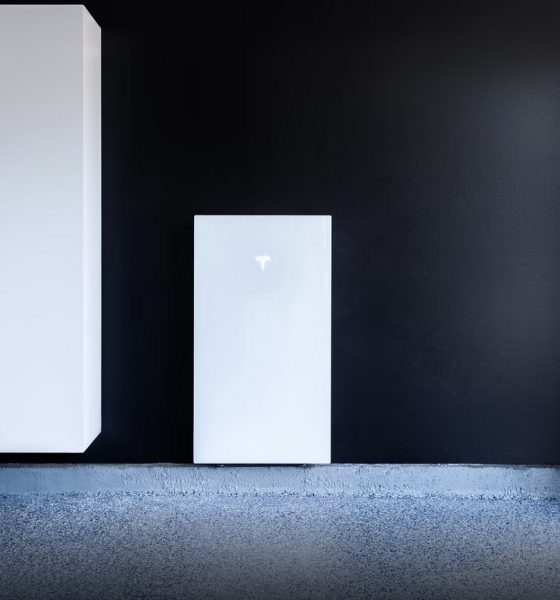Tesla has officially opened orders for its next-generation Powerwall 3 battery on its website, after the company spent much of last year quietly deploying the new hardware.
You can now order a Powerwall 3 from Tesla directly through its website in the U.S., offering updated specs from the previous generation Powerwall 2. Tesla listed the specs for the updated energy storage hardware on its website in September, and it also caught the attention of CEO Elon Musk, who commented on the generation’s improvements after some Powerwall 3 installations had already been spotted.
At the time of writing, the Powerwall 3 doesn’t appear to be available in other North American markets, Canada and Mexico, nor does it appear to be available in Europe or Asia.
PW3 is optimized for ease of installation & high power, which means that a single Powerwall can serve as an uninterruptible power supply for most homes.
This is a big deal for ensuring that the lights stay on and you can power all your devices in the event of a power outage.
— Elon Musk (@elonmusk) September 8, 2023
Still, this is the first time that it’s been possible to purchase a Powerwall 3 through the Tesla website, and it appears you can no longer purchase a Powerwall 2. Tesla also made some price cuts to the Powerwall 2 in late September, seemingly indicating that the company was preparing for the product’s official launch.
The major difference from the Powerwall 2 are that the Powerwall 3 includes a built-in solar inverter and system controller, which the previous generation did not. In addition, Tesla says the Powerwall 3 is scalable up to four units, while the Powerwall 2 is scalable up to 10 units, potentially making it a better option for large-scale commercial projects that may or may not also require the built-in solar inverter. Musk also highlighted the peak power capacity of the Powerwall 3 as a major selling point for the new generation energy storage equipment in a recent post.
What matters most about Powerwall 3 is that it can handle peak power of ~30kW, which is enough to handle dryers & air-conditioners.
This means that a single Powerwall is now enough for most homes. https://t.co/UOKkkpVJCT
— Elon Musk (@elonmusk) February 16, 2024
Users who have Powerwalls often report significant savings on utilities bills and the ability to keep the lights on during outages and other times of peak electricity demand. In some areas, solar and Powerwall owners can also participate in Tesla’s Virtual Power Plant (VPP) pilot programs, which essentially let you create massive, distributed batteries with other Powerwall owners to sell electricity back to the grid during peak-demand periods.
You can see the specs for the Powerwall 3 and last-generation Powerwall 2 below, as can be found on Tesla’s website.
Powerwall 3 |
Powerwall 2 |
|
|
Energy Capacity
|
13.5 kWh
|
13.5 kWh*
|
| On-Grid Power
|
11.5 kW continuous
|
5 kW continuous
|
| Backup Power
|
11.5 kW continuous 185 LRA motor start Seamless backup transition |
7 kW peak 106A LRA motor start Seamless backup transition |
| Scalable
|
Up to 4 units
|
Up to 10 units
|
| Inverter
|
Solar-to-grid efficiency 97.5% 6 solar inputs with Maximum Power Point Trackers |
not included
|
| Size and Weight
|
43.25 in x 24 in x 7.6 in 287 lbs |
45.3 in x 29.6 in x 5.75 in 251.3 lbs |
| Installation
|
Integrated inverter and system controller -4°F to 122°F Flood and dust resistance^ |
Floor or wall mounted Indoor or outdoor -4°F to 122°F |
| Warranty
|
10 years
|
10 years
|
| Notes:
|
^Flood resistant to over 2 ft.
|
*See Powerwall 2 Technical Specifications for more details
|
|
|
Updated 2/17/24: Added CEO Elon Musk’s post on X following the announcement.
Tesla’s California Virtual Power Plant has quietly ramped to an estimated 5.7k homes
What are your thoughts? Let me know at zach@teslarati.com, find me on X at @zacharyvisconti, or send your tips to us at tips@teslarati.com.

News
Tesla FSD fleet is nearing 7 billion total miles, including 2.5 billion city miles
As can be seen on Tesla’s official FSD webpage, vehicles equipped with the system have now navigated over 6.99 billion miles.

Tesla’s Full Self-Driving (Supervised) fleet is closing in on almost 7 billion total miles driven, as per data posted by the company on its official FSD webpage.
These figures hint at the massive scale of data fueling Tesla’s rapid FSD improvements, which have been quite notable as of late.
FSD mileage milestones
As can be seen on Tesla’s official FSD webpage, vehicles equipped with the system have now navigated over 6.99 billion miles. Tesla owner and avid FSD tester Whole Mars Catalog also shared a screenshot indicating that from the nearly 7 billion miles traveled by the FSD fleet, more than 2.5 billion miles were driven inside cities.
City miles are particularly valuable for complex urban scenarios like unprotected turns, pedestrian interactions, and traffic lights. This is also the difference-maker for FSD, as only complex solutions, such as Waymo’s self-driving taxis, operate similarly on inner-city streets. And even then, incidents such as the San Francisco blackouts have proven challenging for sensor-rich vehicles like Waymos.
Tesla’s data edge
Tesla has a number of advantages in the autonomous vehicle sector, one of which is the size of its fleet and the number of vehicles training FSD on real-world roads. Tesla’s nearly 7 billion FSD miles then allow the company to roll out updates that make its vehicles behave like they are being driven by experienced drivers, even if they are operating on their own.
So notable are Tesla’s improvements to FSD that NVIDIA Director of Robotics Jim Fan, after experiencing FSD v14, noted that the system is the first AI that passes what he described as a “Physical Turing Test.”
“Despite knowing exactly how robot learning works, I still find it magical watching the steering wheel turn by itself. First it feels surreal, next it becomes routine. Then, like the smartphone, taking it away actively hurts. This is how humanity gets rewired and glued to god-like technologies,” Fan wrote in a post on X.
News
Tesla starts showing how FSD will change lives in Europe
Local officials tested the system on narrow country roads and were impressed by FSD’s smooth, human-like driving, with some calling the service a game-changer for everyday life in areas that are far from urban centers.

Tesla has launched Europe’s first public shuttle service using Full Self-Driving (Supervised) in the rural Eifelkreis Bitburg-Prüm region of Germany, demonstrating how the technology can restore independence and mobility for people who struggle with limited transport options.
Local officials tested the system on narrow country roads and were impressed by FSD’s smooth, human-like driving, with some calling the service a game-changer for everyday life in areas that are far from urban centers.
Officials see real impact on rural residents
Arzfeld Mayor Johannes Kuhl and District Administrator Andreas Kruppert personally tested the Tesla shuttle service. This allowed them to see just how well FSD navigated winding lanes and rural roads confidently. Kruppert said, “Autonomous driving sounds like science fiction to many, but we simply see here that it works totally well in rural regions too.” Kuhl, for his part, also noted that FSD “feels like a very experienced driver.”
The pilot complements the area’s “Citizen Bus” program, which provides on-demand rides for elderly residents who can no longer drive themselves. Tesla Europe shared a video of a demonstration of the service, highlighting how FSD gives people their freedom back, even in places where public transport is not as prevalent.
What the Ministry for Economic Affairs and Transport says
Rhineland-Palatinate’s Minister Daniela Schmitt supported the project, praising the collaboration that made this “first of its kind in Europe” possible. As per the ministry, the rural rollout for the service shows FSD’s potential beyond major cities, and it delivers tangible benefits like grocery runs, doctor visits, and social connections for isolated residents.
“Reliable and flexible mobility is especially vital in rural areas. With the launch of a shuttle service using self-driving vehicles (FSD supervised) by Tesla in the Eifelkreis Bitburg-Prüm, an innovative pilot project is now getting underway that complements local community bus services. It is the first project of its kind in Europe.
“The result is a real gain for rural mobility: greater accessibility, more flexibility and tangible benefits for everyday life. A strong signal for innovation, cooperation and future-oriented mobility beyond urban centers,” the ministry wrote in a LinkedIn post.
News
Tesla China quietly posts Robotaxi-related job listing
Tesla China is currently seeking a Low Voltage Electrical Engineer to work on circuit board design for the company’s autonomous vehicles.

Tesla has posted a new job listing in Shanghai explicitly tied to its Robotaxi program, fueling speculation that the company is preparing to launch its dedicated autonomous ride-hailing service in China.
As noted in the listing, Tesla China is currently seeking a Low Voltage Electrical Engineer to work on circuit board design for the company’s autonomous vehicles.
Robotaxi-specific role
The listing, which was shared on social media platform X by industry watcher @tslaming, suggested that Tesla China is looking to fill the role urgently. The job listing itself specifically mentions that the person hired for the role will be working on the Low Voltage Hardware team, which would design the circuit boards that would serve as the nervous system of the Robotaxi.
Key tasks for the role, as indicated in the job listing, include collaboration with PCB layout, firmware, mechanical, program management, and validation teams, among other responsibilities. The role is based in Shanghai.
China Robotaxi launch
China represents a massive potential market for robotaxis, with its dense urban centers and supportive policies in select cities. Tesla has limited permission to roll out FSD in the country, though despite this, its vehicles have been hailed as among the best in the market when it comes to autonomous features. So far, at least, it appears that China supports Tesla’s FSD and Robotaxi rollout.
This was hinted at in November, when Tesla brought the Cybercab to the 8th China International Import Expo (CIIE) in Shanghai, marking the first time that the autonomous two-seater was brought to the Asia-Pacific region. The vehicle, despite not having a release date in China, received a significant amount of interest among the event’s attendees.










